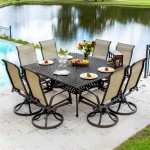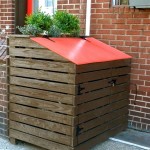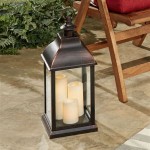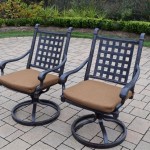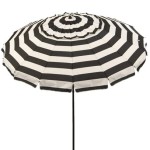Teak Wood For Outdoor Furniture: A Comprehensive Overview
Teak wood (Tectona grandis) has long been prized as a superior material for outdoor furniture. Its inherent durability, resistance to the elements, and aesthetic appeal make it a popular choice for homeowners, landscape architects, and designers alike. This article provides a detailed exploration of the properties of teak wood, its advantages for outdoor furniture applications, maintenance considerations, and factors influencing its market value.
Exceptional Durability and Weather Resistance
Teak's remarkable durability stems from its dense grain structure and high oil content. These oils, naturally occurring within the wood, act as preservatives, rendering the wood resistant to rot, decay, and insect infestation. Unlike many other wood species, teak can withstand prolonged exposure to rain, sun, and extreme temperatures without significant degradation. This inherent resistance reduces the need for frequent treatments or protective coatings, contributing to the longevity of teak outdoor furniture.
The natural oils in teak are primarily composed of tectoquinones, which act as a natural water repellent. This hydrophobic quality prevents water absorption, minimizing the risk of warping, cracking, or swelling. Furthermore, the dense grain structure provides structural integrity, ensuring that the furniture retains its shape and stability even under heavy use or harsh weather conditions. This combination of natural oils and density makes teak outdoor furniture exceptionally resilient and long-lasting compared to furniture made from less durable wood species.
The ability of teak to withstand the elements also translates to reduced maintenance requirements. While regular cleaning is recommended to remove surface dirt and debris, the wood itself does not require frequent painting, staining, or sealing. This ease of maintenance is a significant advantage for homeowners who prefer low-maintenance outdoor furniture options. The natural properties of teak wood allow it to withstand the rigors of outdoor environments without requiring constant attention or specialized care.
Aesthetic Qualities and Timeless Appeal
Beyond its durability, teak wood is also valued for its aesthetic qualities. Freshly cut teak exhibits a rich, golden-brown color that gradually silvers over time when exposed to sunlight. This natural weathering process creates a beautiful, aged patina that is highly sought after by many homeowners. The subtle color variations and intricate grain patterns of teak wood add a touch of natural elegance to any outdoor setting. The transformation from golden brown to silvery gray is a characteristic feature that distinguishes teak from other types of wood used in outdoor furniture.
The versatility of teak wood also allows for a wide range of design possibilities. It can be easily shaped and crafted into various furniture styles, from classic to contemporary. Whether it is used for traditional Adirondack chairs, modern sectional sofas, or intricate dining tables, teak wood lends itself well to diverse design aesthetics. This adaptability makes it a popular choice for creating cohesive and visually appealing outdoor living spaces.
Furthermore, teak wood's natural beauty complements a variety of architectural styles and landscaping designs. Its warm tones and subtle grain patterns blend seamlessly with natural surroundings, creating a harmonious and inviting outdoor atmosphere. The timeless appeal of teak wood ensures that outdoor furniture pieces remain stylish and relevant for many years, making it a worthwhile investment for homeowners seeking long-term value and aesthetic satisfaction.
Responsible Sourcing and Environmental Considerations
The demand for teak wood has raised concerns about deforestation and unsustainable logging practices. Therefore, it is crucial to ensure that teak used for outdoor furniture is sourced from responsibly managed forests. Certification programs, such as the Forest Stewardship Council (FSC), provide assurance that the wood originates from forests that are managed in a sustainable and environmentally responsible manner. Choosing FSC-certified teak ensures that the furniture is made from wood that has been harvested legally and with minimal impact on the environment. Purchasing furniture made from responsibly sourced teak supports sustainable forestry practices and helps to protect valuable forest ecosystems.
The environmental impact of teak wood furniture extends beyond the sourcing of the raw material. The manufacturing process, including the use of glues, finishes, and other materials, also contributes to the overall environmental footprint. Choosing furniture made with eco-friendly adhesives and finishes minimizes the impact on air and water quality. Additionally, opting for furniture that is designed for durability and longevity reduces the need for frequent replacements, thereby minimizing waste and resource consumption. The long lifespan of teak furniture, coupled with responsible sourcing and manufacturing practices, makes it a relatively sustainable choice compared to furniture made from less durable materials.
Another aspect of environmental responsibility is the end-of-life management of teak furniture. Because of its durability, teak furniture can often be repaired and restored, extending its lifespan considerably. When the furniture eventually reaches the end of its useful life, the wood can be recycled or repurposed for other applications. This reduces the amount of waste sent to landfills and conserves valuable resources. The ability to recycle or repurpose teak wood further enhances its environmental credentials compared to synthetic materials that are often difficult to recycle.
Maintenance and Care Recommendations
While teak wood is naturally durable and requires minimal maintenance, regular cleaning is recommended to maintain its appearance and prevent the buildup of dirt, mildew, and other contaminants. A mild soap and water solution can be used to clean teak furniture. Scrubbing the surface with a soft brush helps to remove accumulated dirt and debris. Avoid using harsh chemicals or abrasive cleaners, as these can damage the wood's natural oils and finish. Regular cleaning helps to preserve the original color and texture of the teak wood.
As teak wood ages and is exposed to sunlight, it naturally develops a silvery-gray patina. Some individuals prefer this weathered look, while others prefer to maintain the original golden-brown color. To preserve the original color, teak oil or sealants can be applied periodically. These products help to replenish the natural oils in the wood and protect it from UV radiation. However, it is important to note that applying teak oil or sealant can also change the texture and appearance of the wood, making it appear darker and shinier. The frequency of oiling or sealing depends on the level of exposure to sunlight and the desired aesthetic outcome. The decision to oil or seal teak furniture is ultimately a matter of personal preference.
In addition to regular cleaning and optional oiling or sealing, it is important to protect teak furniture from extreme weather conditions whenever possible. During harsh winters or prolonged periods of rain, covering the furniture with waterproof covers or storing it in a sheltered location can help to prolong its lifespan and prevent damage. Cushions and other removable components should be stored indoors when not in use to prevent mildew and fading. Proper storage and protection can significantly extend the lifespan of teak outdoor furniture and minimize the need for repairs or replacements. Taking these simple precautions will ensure that the furniture remains in good condition for many years to come.
Factors Influencing Market Value
The market value of teak wood furniture is influenced by several factors, including the origin of the wood, its grade, and the quality of craftsmanship. Teak wood from Myanmar (formerly Burma) is generally considered to be the highest quality, due to its dense grain and high oil content. However, due to political and ethical concerns, sourcing teak from Myanmar can be challenging. Teak wood from other regions, such as Indonesia and South America, is also available, but the quality may vary depending on the growing conditions and forestry practices. Understanding the origin of the teak wood is crucial for assessing its value and durability.
The grade of teak wood also affects its price. "A-grade" teak is heartwood, which is the dense, inner part of the tree that is naturally rich in oil and highly resistant to decay. "B-grade" and "C-grade" teak contain more sapwood, which is the outer part of the tree that is less dense and more susceptible to decay. Furniture made from A-grade teak is generally more expensive than furniture made from lower grades of teak. The grade of teak wood should be clearly indicated by the manufacturer or retailer. Inspecting the wood for knots, cracks, and other imperfections can also help to assess its quality and value.
The quality of craftsmanship also plays a significant role in determining the market value of teak wood furniture. Well-constructed furniture with precise joinery, smooth finishes, and durable hardware is typically more expensive than poorly made furniture. Look for furniture that is assembled with mortise-and-tenon joints or other strong joinery techniques. Inspect the hardware for signs of corrosion or weakness. The overall design and aesthetics of the furniture also contribute to its value. Furniture with unique or intricate designs may command a higher price than simpler, more basic designs. By considering these factors, consumers can make informed decisions when purchasing teak wood outdoor furniture.

Caterina Teak Wood 6 Piece Outdoor Dining Set

Premium Teak Outdoor Furniture Terra Living

Royal Teak Collection Coastal Deep Seating 6 Piece Patio Conversation Set With Rectangular Coffee Table Square Side Tables Spa Sun

Caring For Teak Blue Sky Outdoor

Pearl Outdoor Teak Finished Acacia Wood Club Chairs With Cream Water Resistant Cushions Set Of 2

Sunnydaze Outdoor Solid Teak Wood Slat Back Patio Dining Armchair Brown

Teak Wood Nordic Patio Set Outdoor Furniture Ensemble Model 01 Armchair White Fabric

Cambridge Casual Robin 2pc Teak Wood Outdoor Lounge Chair With Oyster Cushion Indonesian Craftsmanship Weather Resistant

A Grade Teak Wood Pool Storage Box Chest Cabinet Garden Outdoor Patio

How To Restore Teak Outdoor Furniture Terra Living

